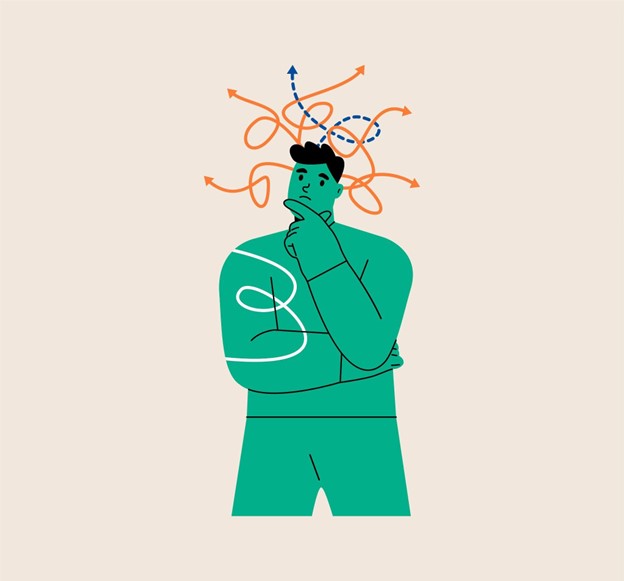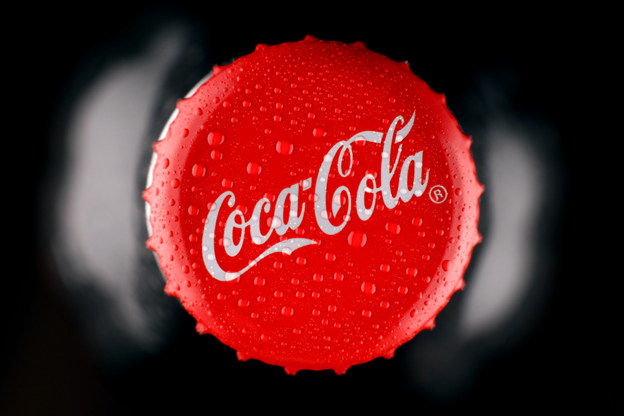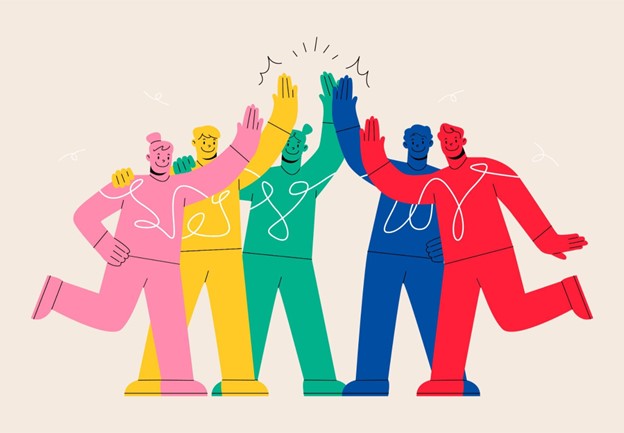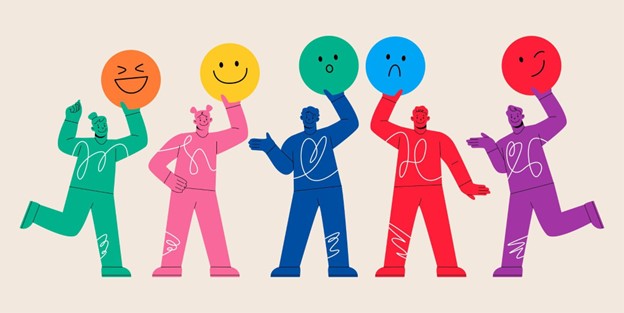
The Psychology of Branding18 min read
March 4, 2024Lead With a Sharper Edge
Branding is everywhere, from the screen shining back at you, to the shirt you’re wearing, to the cup of coffee next to you (or maybe it’s tea). Yet, it’s more than just a name and logo; at its core, branding is a psychological art form, crafted to resonate with us on both conscious and subconscious levels. It’s not merely about recognition – it’s about connection. This intricate dance of engagement is pivotal, whether it’s realized or not, because making that connection is what truly matters.
At Sharp Innovations, our work spans a vast spectrum of industries, supporting businesses big and small – from local accounting firms striving to foster relationships with their clients, to regional manufacturing giants aiming to expand their reach. Our approach starts with understanding the power of branding. Whether it’s about building trust and confidence or celebrating a legacy of hard-earned respect, we harness the nuances of branding psychology to help our clients connect more effectively. Branding isn’t just part of our strategy; it’s at the heart of how we help businesses bridge the gap between them and their audience.
At first blush, branding and psychology may seem entirely unrelated – quite the contrary, however; branding is psychology. But what exactly does branding have to do with what and how people think? The answer lies in the very fabric of our daily decisions, emotions, and perceptions. Branding isn’t just about the visual or the verbal; it’s about tapping into the human psyche, leveraging psychological principles to create a bond between brand and consumer that’s as profound as it is subtle.
The Science Behind Branding Psychology

The psychological scaffolding of branding is built on a foundation of recognized principles, each playing a pivotal role in shaping consumer behavior and preferences. These principles include:
Color Psychology
Colors wield the power to evoke emotions and influence behavior. The red of a logo might spark excitement or urgency, while a calming blue can build trust and security. This isn’t coincidental; it’s grounded in psychological research that links specific colors to specific emotional responses, guiding brands in their choice of color schemes to align with their identity and desired consumer reaction.
Pattern Recognition
Humans are hardwired to recognize patterns; it’s how we make sense of the world. Brands that maintain a consistent look and feel across all touchpoints leverage this tendency to build familiarity and trust. Consistency in branding – from logos to language – helps embed a brand into the consumer’s psyche, making it easily recognizable and, more importantly, reliable.
In-groups and Belonging
Our psychological need to belong – to be part of a group that shares our interests, values, or aspirations – is powerful. Brands that effectively position themselves as symbols of particular in-groups or lifestyles tap into this need, creating a sense of belonging among consumers. By identifying with a brand, consumers feel part of a larger community, which can foster loyalty and advocacy.
Brand Personalities
Just as people have personalities, so do brands. Whether a brand embodies ruggedness, sophistication, competence, sincerity, or excitement, these traits communicate directly with consumers on a subconscious level. Consumers gravitate towards brands whose personalities resonate with their own identity or aspirational self, a concept rooted in the psychological theory of self-concept congruence.
Bridging Theory and Practice in Branding
At Sharp Innovations, our approach to branding transcends traditional methods, and is firmly rooted in the rich soil of psychological principles. But understanding these principles is just the beginning. True mastery in branding psychology lies in the artful integration of these elements to craft a brand identity that resonates on an emotional level, transforming casual observers into loyal advocates. This is where our team’s diverse expertise becomes your unparalleled advantage.
With in-house designers, content writers, marketers, SEO specialists, and developers at the ready, we don’t just theorize about the impact of psychological branding; we bring it to life. Our multifaceted team works in concert to ensure that every aspect of your brand – from visual identity and narrative to digital presence and market positioning – is infused with psychological insight. This holistic approach doesn’t just aim for recognition; it seeks to forge a profound connection with your audience, establishing bonds that endure the test of time.
As we delve deeper into the application of these principles, let us showcase how our collective expertise at Sharp Innovations transforms abstract concepts into tangible branding successes. Through detailed examples and case studies, we will illustrate the transformative power of a well-rounded branding strategy, backed by a team dedicated to your brand’s growth and resonance in the hearts and minds of your audience.
Join us as we navigate the nuanced landscape of color psychology, pattern recognition, and more, demonstrating the substantial impact of our integrated strategies on achieving branding excellence. With Sharp Innovations, you’re not just building a brand; you’re crafting a legacy.
Color Psychology

Life in Color
One of the foundational studies in color psychology is the “Impact of Color on Marketing,” which found that up to 90% of snap judgments made about products can be based on color alone. This research highlights why choosing the right color to match your brand’s message or product’s purpose is important. For instance, a study published in the Journal of Business Research indicated that blue hues tend to be preferred in certain contexts due to their association with trust, peace, and reliability, which is why companies like Facebook and Twitter utilize blue in their branding.
The emotional impact of color extends beyond a person’s preference – it taps into deeper psychological responses that can enhance or hinder the consumer’s perception of a brand. Green, for instance, is not only associated with nature and sustainability but can also evoke feelings of growth and renewal. This makes it an excellent choice for brands emphasizing environmental consciousness or innovation. On the other hand, warmer colors like red and yellow are known to stimulate appetite and convey a sense of urgency, making them favorites for restaurants and bars (looking at you, McDonald’s), but also things like sales.
The choice of Sharp Innovations’ own logo – an electric combination of orange and blue – illustrates this principle in action. Orange, a color known for its energetic and creative appeal, reflects our innovative spirit and hopefully makes us a bit more approachable. Blue adds a balance of stability and dedication to service. This strategic use of color psychology not only makes our logo memorable but also communicates our brand’s core values at a glance.
It’s not a one-size-fits-all, however; it requires a nuanced understanding of your target audience’s culture, demographics, and expectations. The right color palette can act as a silent ambassador for your brand, conveying values and promises without a word. At Sharp, we leverage the psychology of color to craft branding strategies that not only capture attention but resonate on an emotional level, ensuring that your first impression is both powerful and lasting. By thoughtfully applying color psychology, we help your brand communicate its essence, stand out in a crowded marketplace, and build a deeper connection with your audience.
Color Psychology in Action
A Coca-Cola Classic
Coca-Cola’s signature red is a prime example of color psychology at work. Red not only grabs attention but also stimulates feelings of excitement and passion. Coca-Cola leverages that emotion to evoke a sense of vitality and joy that people associate with its brand. This strategic use of red has helped Coca-Cola maintain its position as a symbol of refreshment and happiness worldwide.

Tiffany & Co.’s Robin Egg Blue
The distinctive robin egg blue of Tiffany & Co. packaging is instantly recognizable and evokes feelings of luxury, exclusivity, and tranquility. This unique shade of blue has become so synonymous with the brand’s high-quality jewelry that it significantly enhances the customer’s unboxing experience, making it memorable and emotionally charged.

Pattern Recognition and Consistency

Connect the Dots
Research in cognitive psychology, particularly on pattern recognition, shows that humans prefer familiar patterns and are more likely to trust and adhere to brands that consistently present themselves. This is rooted in the mere exposure effect, a psychological phenomenon where people tend to develop a preference for things merely because they are familiar with them. Consistency in branding also transcends just the visual aspect of brand or product. Oxford researcher and professor Charles Spence found that things like the way a label feels to touch, how a space might smell, or how commercial simply sounds creates neural pathways associated with that brand. Therefore, consistency helps in building brand recognition and loyalty and keeping consistent continues your story.
Apple: Don’t Overthink Different
Apple’s Brand Consistency: Apple’s use of clean lines, a simple color palette, and minimalist design across all its products, packaging, and marketing materials makes it a standout example of consistency. This uniformity helps consumers easily recognize Apple products and associate them with high quality, innovation, and sleek design, reinforcing brand loyalty.
In-groups and Belonging

Branding is a Team Sport
The need for belonging is a well-documented psychological drive, as outlined by Abraham Maslow’s Hierarchy of Needs. Brands that create a sense of community or belonging tap into this basic psychological need. Research by Roy Baumeister and Mark Leary, titled “The Need to Belong: Desire for Interpersonal Attachments as a Fundamental Human Motivation,” underpins the importance of this aspect in branding, illustrating how effective branding strategies can create perceived in-groups that consumers are motivated to join.
How Brands Create a Sense of Belonging

Brands can create a sense of belonging in several ways, effectively tapping into this deep-rooted psychological need:
Community Building
Brands that actively build communities around their products or services offer consumers a platform to connect with like-minded individuals. This can be achieved through online forums, social media groups, brand-sponsored events, or loyalty programs. These platforms allow consumers to share experiences, offer advice, and foster relationships, reinforcing their sense of belonging to the brand’s community.
Shared Values and Narratives
Brands that communicate clear and intentional values and narratives that resonate with their audience can foster a strong sense of both identity and belonging. Consumers are drawn to brands whose values align with their own, as this alignment reinforces their own concept of self and the feeling of being part of a larger group that shares their beliefs. Patagonia, for example, has successfully built a community around environmental conservation, attracting consumers who identify with their cause.
Personalization and Recognition
Tailored experiences and personal recognition make consumers feel valued and seen by a brand, further strengthening their sense of belonging. This can range from personalized product recommendations to acknowledging milestones in customer-brand relationships. Such gestures signal to consumers that they are an integral part of the brand’s community.
Inclusive Marketing
Adopting inclusive marketing strategies that celebrate the diversity of consumer backgrounds and experiences significantly widens a brand’s appeal and cultivates a deeper sense of community belonging. When consumers see their own lives and stories mirrored in a brand’s marketing efforts, they feel a genuine sense of welcome and inclusion, reinforcing their connection to the brand’s community.
The Impact of Belonging on Consumer Behavior
The sense of belonging that brands cultivate has a profound impact on consumer behavior:
Brand Loyalty
Consumers who feel a strong sense of belonging are more likely to exhibit loyalty to a brand, even in the face of competitors’ attempts to win them over. This loyalty stems from the emotional connections and relationships they associate with the brand.
Word-of-Mouth Advocacy
Satisfied members of a brand community are more likely to become brand advocates, sharing their positive experiences and recommending the brand to others. This organic advocacy is invaluable for brand growth and reputation.
Increased Engagement
A sense of belonging can lead to increased consumer engagement with the brand, from higher participation in community events to more frequent interactions on social media platforms. Engaged consumers are more likely to contribute to the community’s vibrancy, offering feedback, content, and support to fellow members.
Nike: Just Do It, Together
Nike positions itself not just as a supplier of athletic wear but as a member and leader of the global athletic community. By endorsing athletes, sponsoring sports events, and promoting a message of perseverance and achievement, Nike creates a sense of belonging among its consumers. People who buy Nike products feel they are part of a community that values fitness, determination, and success.
Brand Personalities

Dimensions of Brand Personality
Aaker’s Brand Personality Framework is a seminal piece of research that categorizes brand personalities into five dimensions: sincerity, excitement, competence, sophistication, and ruggedness. This framework suggests that consumers attribute human personality traits to brands, which then influence their preferences and loyalty. The framework, outlined in Jennifer Aaker’s study “Dimensions of Brand Personality,” provides a basis for understanding how and why consumers connect with certain brands over others, demonstrating the psychological underpinning of brand identity.
Sincerity: Ben & Jerry’s – Doing The World a Flavor
Ben & Jerry’s, known for its high-quality, creative ice cream flavors, also stands out for its sincere commitment to social justice, environmental sustainability, and community involvement. The brand openly supports various causes, such as climate change awareness, LGBTQ+ rights, and racial justice, integrating these values into its business operations, product development, and marketing strategies. This sincerity in advocating for positive change resonates deeply with consumers who share similar values, creating a loyal customer base that supports the brand not just for its products but for its principles.
Excitement: Red Bull Gives You Wings
Red Bull exemplifies the “excitement” personality through its marketing efforts and brand associations. The brand sponsors extreme sports events, from cliff diving to Formula 1 racing, aligning itself with the thrill and adrenaline of these activities. Its famous tagline, “Red Bull gives you wings,” encapsulates this spirit of adventure and energy. Red Bull’s approach to branding goes beyond selling an energy drink; it sells an exhilarating lifestyle, appealing to consumers drawn to high-energy, adventurous experiences.
Competence: Milwaukee Tools for The Trade

Milwaukee Tools exemplifies brand “competence” through its unwavering commitment to delivering high-quality, durable tools designed for professionals. Known for their innovation and reliability, Milwaukee has built a reputation as a trusted partner for tradespeople across industries and professions. The brand’s focus on developing products that withstand the rigors of heavy use, combined with their dedication to understanding and meeting the real-world needs of their users, showcases their expertise and leadership in the tool industry. This competence resonates with professionals who rely on their tools daily, cementing Milwaukee Tools as a go-to brand for quality and durability.
Ruggedness: It’s a Jeep Thing

Jeep has successfully cultivated a brand personality that embodies ruggedness and adventure. Through its marketing campaigns that feature Jeeps traversing challenging terrains and its support for outdoor lifestyles, the brand appeals to consumers who see themselves as adventurous, outdoorsy, and independent. This clear brand personality helps Jeep connect with a specific segment of the market that values durability and performance in vehicles.
Sophistication: Rolex, Simply Timeless
Rolex stands as a quintessential example of sophistication in branding. Renowned for its classic design, exceptional craftsmanship, and precision, the luxury watchmaker embodies elegance and prestige. Rolex’s marketing emphasizes the brand’s association with achievements, exploration, and a distinguished lifestyle, appealing to consumers who value not just the functional aspect of timekeeping but the statement it makes about their personal success and taste. By consistently aligning itself with high-profile events, ambassadors, and sponsorships in the realms of sports, arts, and science, Rolex crafts an image of sophistication that transcends the product, making the brand synonymous with a refined and accomplished way of life.
Applying Research to Brand Strategy

When you harness the psychology of branding, you connect with your audience on a personal level. You’re demonstrating that you understand who they are, what they value, what they believe in and most importantly, what they need from the brands they value. Branding is a powerful tool, and understanding brand loyalty psychology is critical for any brand or company that wants to succeed.
Incorporating these research-backed principles into a brand strategy involves a nuanced understanding of the target audience and how these psychological triggers can influence their perception and behavior towards your brand. For instance, leveraging color psychology involves more than selecting a color that aligns with a brand’s personality; it also requires understanding the cultural context and the specific associations that the target audience may have with those colors.
Pattern recognition and consistency across all brand touchpoints can reinforce brand recall and loyalty. This is why maintaining a consistent brand voice, imagery, and overall aesthetic across platforms is crucial.
Creating a sense of belonging can be achieved through targeted marketing strategies that appeal to specific in-groups, utilizing social proof and community-building activities to foster a strong brand community.
Finally, developing a clear brand personality that resonates with the target audience’s values and aspirations can create a deeper emotional connection, making the brand feel more relatable and human.
By grounding branding strategies in these psychological principles and supporting research, businesses can create more meaningful and lasting connections with their audiences.
Empower Your Brand with Sharp Innovations

In the journey through the psychological landscape of branding, we’ve uncovered the profound impact of color psychology, the importance of pattern recognition and consistency, the power of in-groups and belonging, and the resonance of brand personalities. These principles are not just theoretical musings; they are actionable insights that can transform how consumers connect with your brand, turning passive observers into passionate advocates.
But understanding the psychology of branding is only the first step. The real magic happens when these insights are applied to your business and its unique story, values, and objectives. Our team of experts doesn’t just know the science and psychology of branding; we live it, do it, and apply it to help businesses like yours stand out in a crowded marketplace.
Whether you’re looking to refresh your brand, launch a new product line, or simply connect with your audience on a deeper level, Sharp Innovations is here to guide you. We’ll work with you to harness the psychological principles of branding, crafting a strategy that is not only memorable but irresistibly engaging. Let’s turn the science of branding into your competitive edge.

Don’t leave your brand’s impact to chance. Contact Sharp Innovations today, and let’s create a brand experience that resonates, engages, and endures. Because when you lead with a sharper edge, the world takes notice.